WWII 1944 U.S. 14th Air Force Pilot "China-Burma-India Theater" Double-Sided Silk Evasion Map*

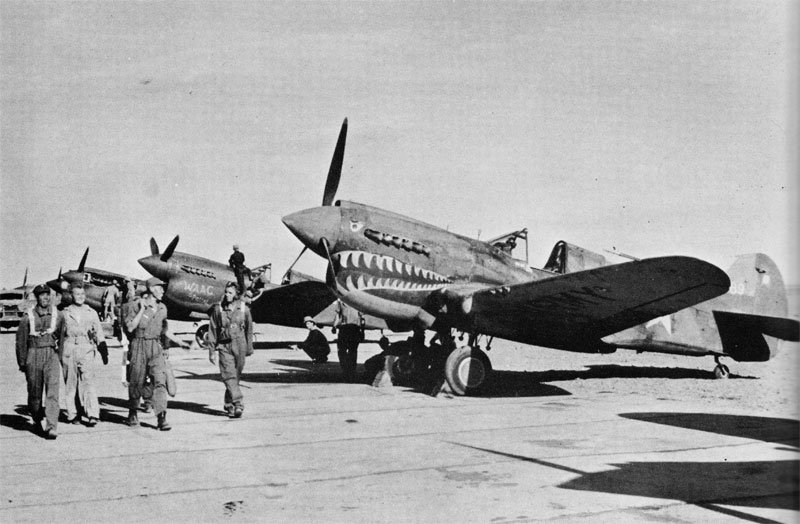
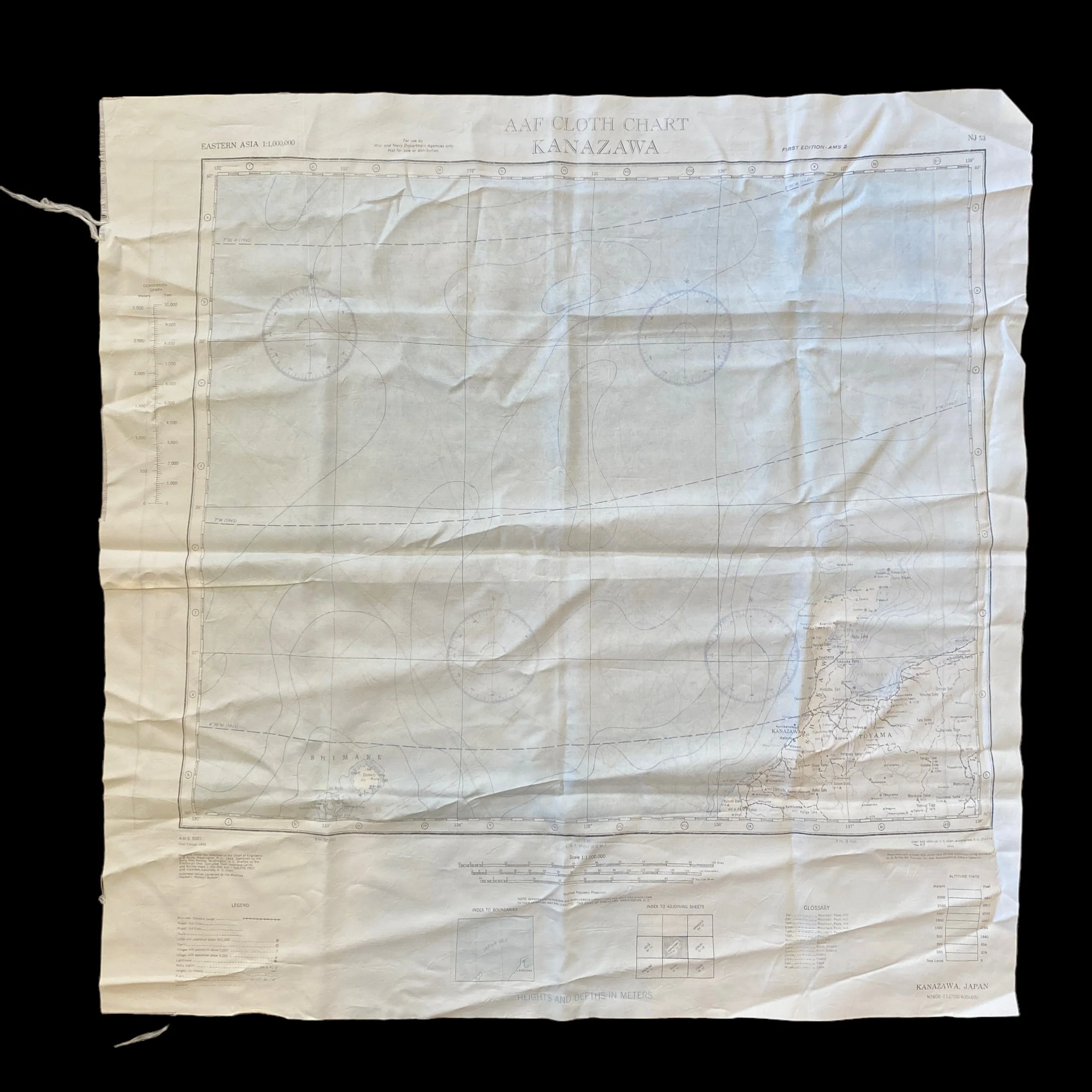














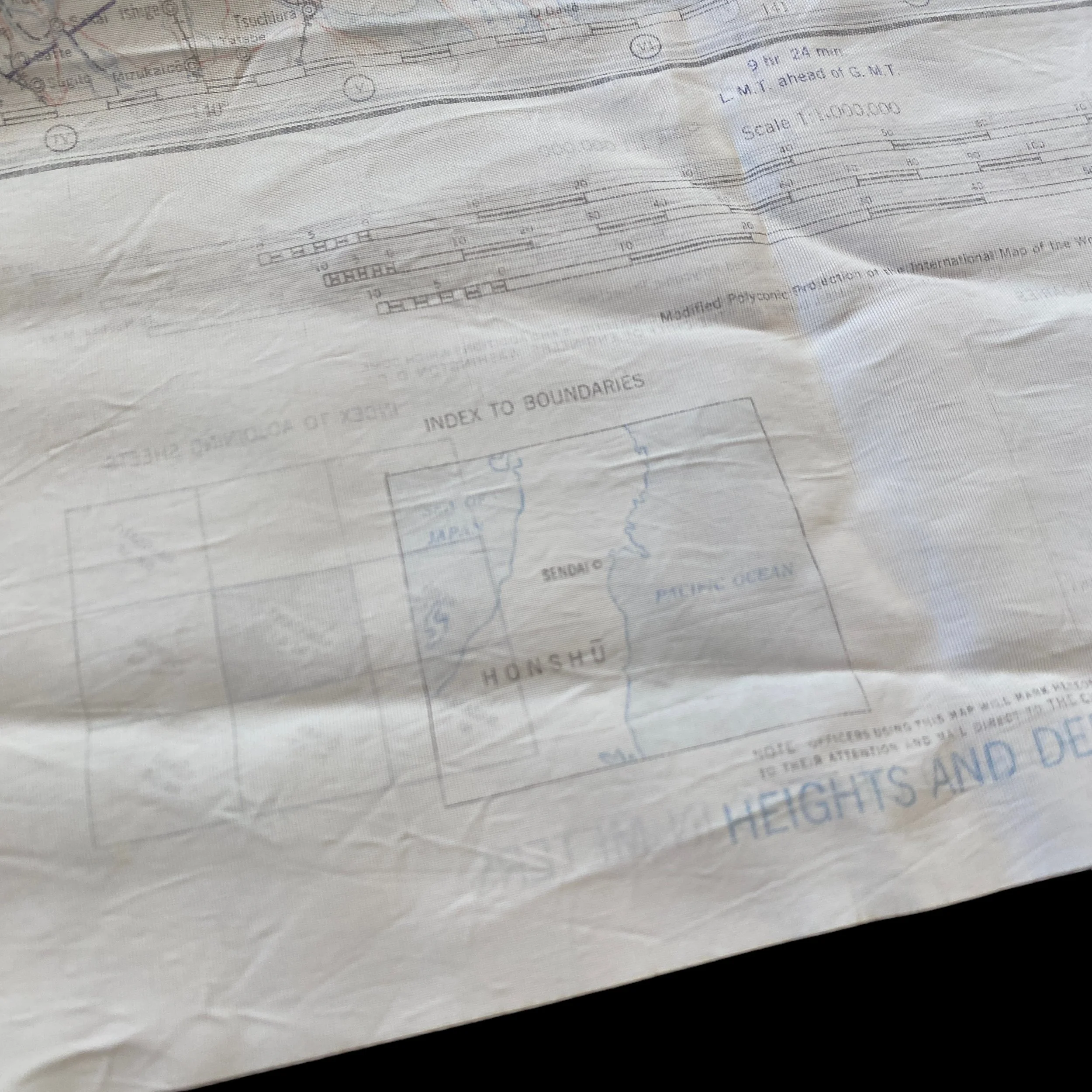

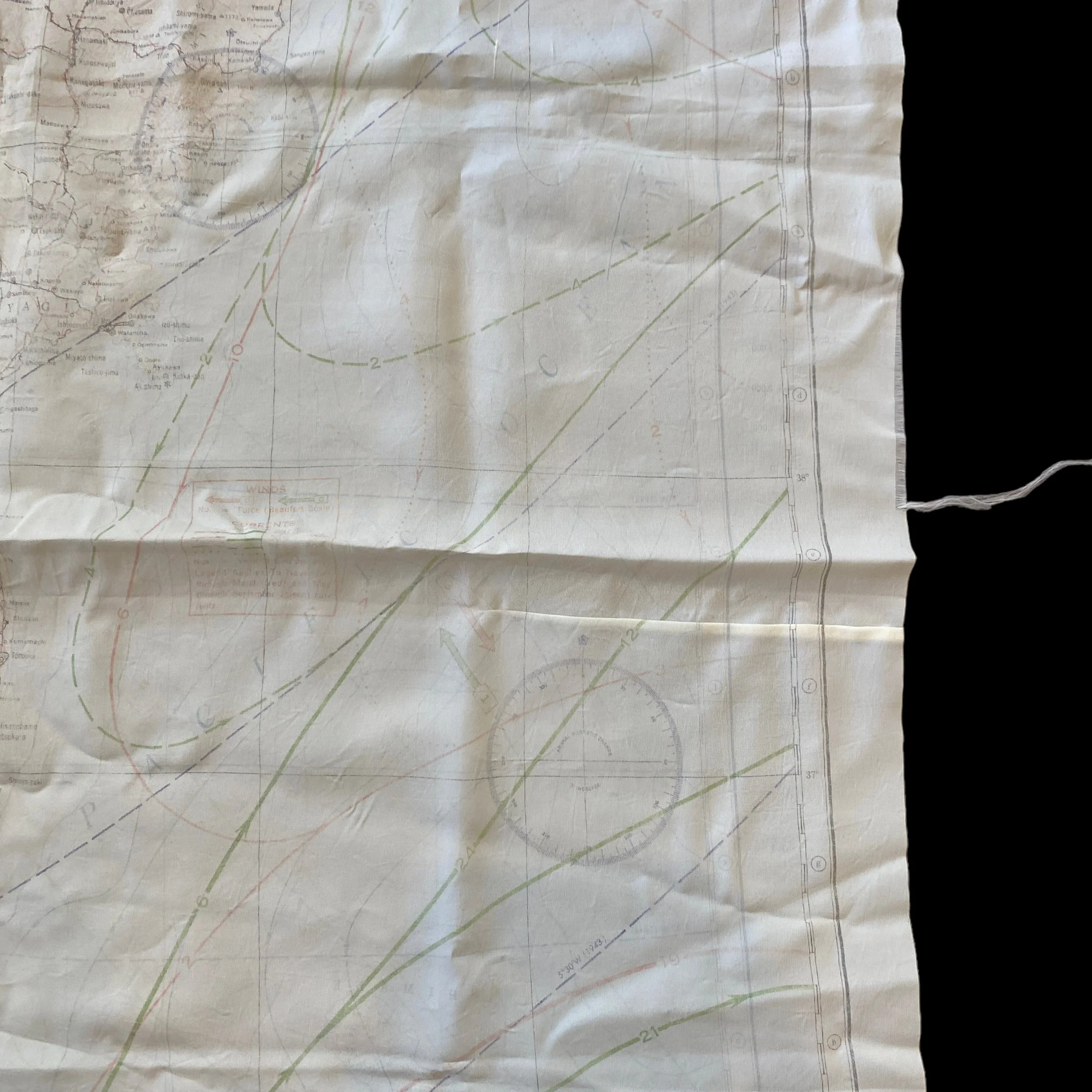

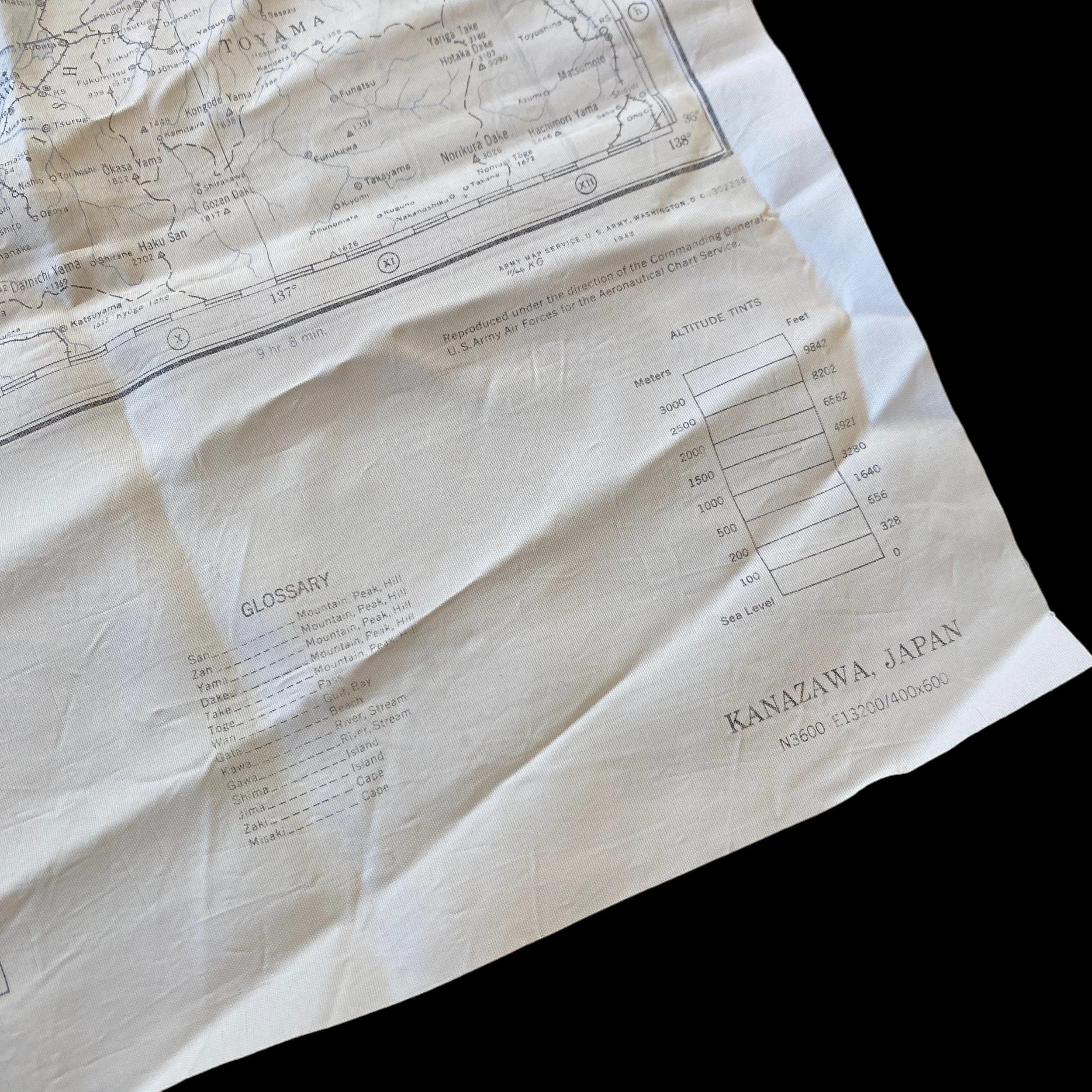






WWII 1944 U.S. 14th Air Force Pilot "China-Burma-India Theater" Double-Sided Silk Evasion Map*
Comes with a hand-signed C.O.A.
This rare and museum-grade World War II double-sided silk invasion map was used by a U.S. pilot of the 14th Air Force from 1943 through 1945. Commonly referred to by U.S. pilots of WWII as the “scarf/handkerchief chart”, so called because of their size that resembled a handkerchief and was commonly worn around the neck, was designed primarily for use by U.S. pilots operating in that specific theater of operation.
Led by General Claire Lee Chennault, the 14th Air Force operated in the China-Burma-India theater. It played a significant role in air operations against Japanese forces in China. The Flying Tigers, a group of American volunteer pilots, initially operated under Chennault and later became part of the U.S. Army Air Forces. Despite supply problems, the 14th Air Force grew from fewer than 200 aircraft to more than 700 planes by the end of the war. American airmen in China destroyed and damaged more than 4,000 Japanese aircraft during the war. They also sank more than a million tons of shipping and destroyed hundreds of locomotives, trucks and bridges while helping to defeat the Japanese in China.
Overall, the U.S. air operations in China during this period were part of the broader strategy to aid China and diminish Japanese military capabilities in the region. The collaboration with Chinese forces and the strategic use of airpower played a crucial role in the Allied efforts in the China-Burma-India theater.
14th Air Force & The Flying Tigers:
The great value of the American Volunteer Group (AVG or Flying Tigers) was psychological and diplomatic: Americans and Chinese hailed them as heroes during the early period of World War II when Japan had the upper hand. The Flying Tigers raised public hopes for eventual victory while Allied forces, reeling from Pearl Harbor and other Japanese victories, organized for war.
Claire Chennault's AVG volunteers began training in Burma in July 1941. When the Japanese attacked Pearl Harbor in December, the small American group had few supplies and little hope of reinforcement. Starting with 43 serviceable P-40B fighters and 84 former U.S. military pilots, their first combat was on Dec. 20, 1941. The name "Flying Tigers" came from news reports of the group's exploits, and the AVG was flashy, informal and very effective. In its brief combat life -- December 1941 to July 1942 -- the AVG destroyed 296 Japanese aircraft in China and Burma.
When the U.S. Army Air Forces arrived in July 1942, Gen. Chennault's AVG was disbanded and a few of its members joined him in a regular army unit called the China Air Task Force. In March 1943, the Task Force became the nucleus of the new 14th Air Force. Their supplies came over "the Hump," a dangerous 500-mile air route from India to China over the Himalayas.
"Japan can be defeated in China. It can be defeated by an Air Force so small that in other theaters it would be called ridiculous. I am confident that, given real authority in command of such an Air Force, I can cause the collapse of Japan."
- Brig. Gen. Claire Chennault
Despite supply problems, the 14th Air Force grew from fewer than 200 aircraft to more than 700 planes by the end of the war. American airmen in China destroyed and damaged more than 4,000 Japanese aircraft during the war. They also sank more than a million tons of shipping and destroyed hundreds of locomotives, trucks and bridges while helping to defeat the Japanese in China.
"... I judge the operations of the 14th Air Force to have constituted between 60 percent and 75 percent of our effective opposition in China. Without the (14th) air force we could have gone anywhere we wished."
- Lt. Gen. Takahashi, Japanese Chief of Staff in China
History of the 14th Air Force During WWII:
The 14th Air Force, under the command of General Claire Lee Chennault, played a crucial role in the China-Burma-India (CBI) theater during World War II. This air force was tasked with supporting Chinese forces and disrupting Japanese operations in the region. Here are some details about the missions and important operations carried out by the 14th Air Force:
Flying Tigers:
The Flying Tigers, officially known as the 1st American Volunteer Group (AVG), were a group of American volunteer pilots recruited by Chennault to aid China in its fight against Japanese aggression.
Operating P-40 Warhawks, the Flying Tigers achieved notable success in air combat against Japanese aircraft. Their combat proficiency and distinctive shark-faced planes became iconic symbols of U.S. air power in the region.
In 1942, after the dissolution of the AVG, the Flying Tigers were incorporated into the U.S. Army Air Forces as the China Air Task Force, which later evolved into the 14th Air Force.
Air Operations:
The 14th Air Force conducted a variety of air operations, including bombing raids, reconnaissance missions, and air-to-air combat.
Chennault employed innovative and unconventional tactics, such as the "defensive offense" strategy, which involved luring Japanese aircraft into positions where American pilots could more effectively engage them.
Hindrance to Japanese Supply Lines:
One of the key objectives of the 14th Air Force was to disrupt Japanese supply lines in China. This involved targeting transportation infrastructure, bridges, and other logistical facilities.
The air force's efforts to interdict Japanese supply routes were crucial in hampering the enemy's ability to sustain its forces in the vast and challenging terrain of China.
The Battle of Yunnan-Burma Road:
The 14th Air Force played a pivotal role in the defense of the Yunnan-Burma Road, a vital supply route for the Chinese military. By providing air cover and interdicting Japanese movements, they contributed significantly to maintaining this critical supply line.
Air Support for Chinese Ground Forces:
In addition to strategic bombing and interdiction missions, the 14th Air Force provided air support for Chinese ground forces. This support was instrumental in various campaigns against Japanese troops in China.
The 14th Air Force's operations in the CBI theater demonstrated the importance of air power in supporting ground forces and disrupting enemy logistics. General Chennault's leadership and the legacy of the Flying Tigers contributed significantly to the success of Allied efforts in the region during the later stages of World War II.
History of the Silk Evasion Map During WWII:
World War II marked a pivotal moment in global history, with nations engaged in widespread conflict across various theaters. The Pacific Theater, a significant arena of warfare, witnessed intense battles and strategic maneuvers. Amidst the chaos, U.S. pilots utilized silk evasion maps as crucial tools for survival. These maps, crafted from silk fabric, played a vital role in aiding pilots' navigation, escape, and evasion from enemy forces.
The idea of silk maps for military use traces its roots back to World War I. However, during World War II, the U.S. military, recognizing the need for specialized navigational aids for aviators, developed silk evasion maps. These maps were typically printed on silk fabric due to its durability, lightweight nature, and resistance to weather conditions. The decision to use silk reflected a strategic choice to ensure the maps remained intact and functional even in adverse situations.
Silk evasion maps were meticulously designed to meet the specific needs of pilots operating in the Pacific Theater. They included detailed information about geographical features, sea currents, enemy positions, airfields, and escape routes. The maps were compact, foldable, and easily concealable, allowing pilots to carry them without adding excessive weight or bulk to their gear. The use of silk not only provided durability but also made the maps resistant to water, which was crucial for survival in the unpredictable Pacific climate.
One of the primary purposes of silk evasion maps was to serve as a reliable navigational aid for U.S. pilots. The Pacific Theater presented unique challenges with vast expanses of open water, numerous islands, and changing weather conditions. Pilots relied on these maps to plot their courses accurately, identify landmarks, and navigate safely through the complex terrain. The detailed information on the maps proved invaluable for ensuring precision in flight paths and successful mission execution.
In addition to navigation, silk evasion maps played a pivotal role in the escape and evasion tactics employed by U.S. pilots. If a pilot was shot down behind enemy lines, the map provided crucial information for evading capture and finding their way back to friendly territory. The compact size and silk material allowed pilots to conceal the maps easily, preventing them from falling into enemy hands. The information on escape routes, friendly outposts, and potential dangers facilitated quick decision-making in high-stakes situations.
The Pacific Theater presented unique challenges due to its vast expanse, numerous islands, and the fluid nature of naval and aerial combat. Silk evasion maps became indispensable tools, contributing significantly to the success of U.S. operations. Whether executing precise bombing runs, conducting reconnaissance missions, or evading enemy forces after being shot down, pilots equipped with silk evasion maps gained a strategic advantage in navigating the complex and dynamic theater of war.
The use of silk evasion maps by U.S. pilots in the Pacific Theater during World War II exemplifies the innovative approaches taken to overcome the challenges of warfare. These maps were more than just navigational aids; they were lifelines for pilots operating in a hostile environment. Their strategic significance lies in their ability to provide critical information for both navigation and survival, contributing to the overall success of U.S. military operations in the Pacific Theater during one of the most significant conflicts in history.